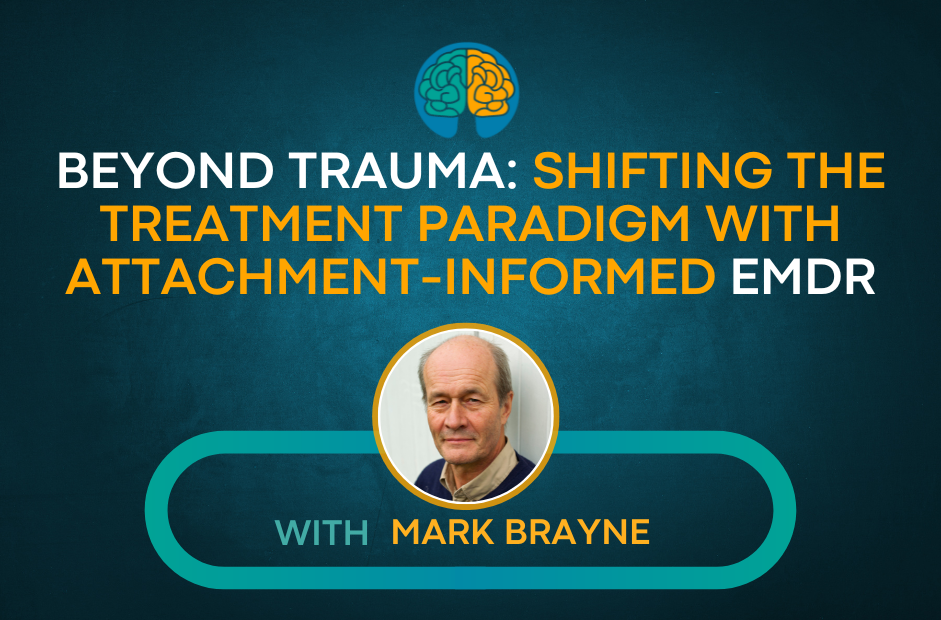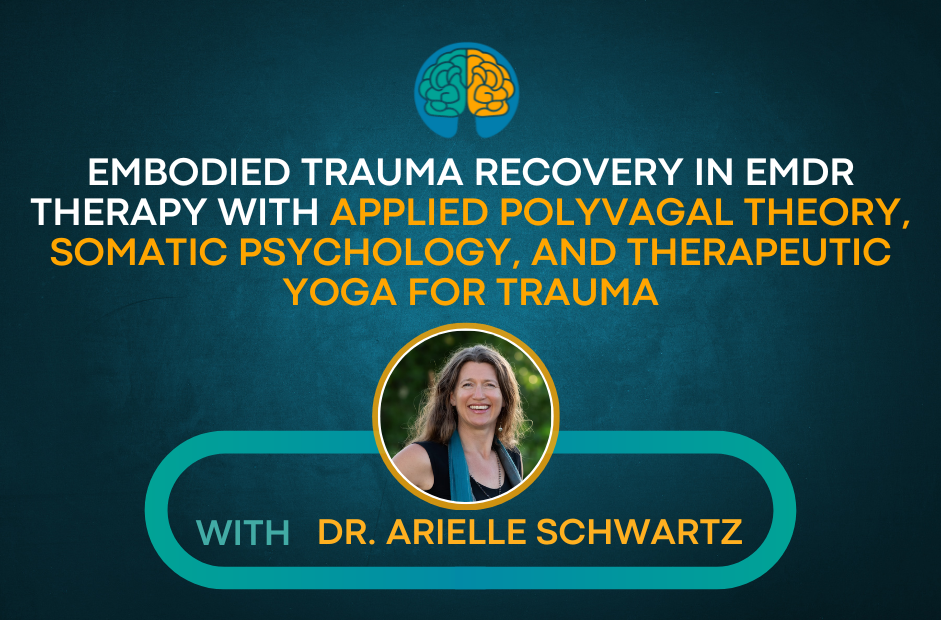Many people express both curiosity and fear about EMDR therapy. It is different than straight-up talk therapy.
In this article, you’ll learn how EMDR works and get six tips for having a great EMDR experience.
EMDR is a focused, goal-oriented, and effective therapy with the potential to change lives. It is recognized as effective and beneficial by the American Psychiatric Association, the US Department of Veterans Affairs, the Department of Defense, and the World Health Organization, among other national and international organizations.
1. Choose a well-trained EMDR therapist
There is no one way to do therapy, but there can be a wrong way. Like any other therapy out there (or medication, for that matter), EMDR has the potential to harm—if it used irresponsibly or by a practitioner who is not fully trained.
If you are interested in seeing an EMDR therapist, make sure they have been trained by an accredited institute. Ask your therapist about their training and experience!
In the very early days of EMDR, some EMDR practitioners began training others without enough training themselves. Unfortunately, people treated by these untrained therapists experienced harmful effects. It turned out that their “therapists” were neither following the procedures nor the principles that the original discoverer of EMDR, Francine Shapiro, had laid out. To protect the public, Shapiro instituted training requirements that ensure capable therapists.
EMDR should be done responsibly. Well-trained therapists watch for certain conditions that can interfere with the effectiveness of EMDR or, worse, cause harm, including medical risk factors, a need for stabilization, undiagnosed dissociative disorders, certain susceptibilities, a need for other therapy first, and more. If anything gets worse during therapy, a trained therapist can help you resolve this situation.
2. Choose a Therapist You Trust and Like
A good therapeutic relationship helps you feel safe with your therapist when exploring painful traumas from the past. The better you and your therapist trust each other, the better the chance that your treatment is going to work.
To establish a positive therapeutic relationship, choose someone you are comfortable with, you trust, and you like working with. (You don’t have to like them in the way you like your friends.)
A good therapist understands that not every therapist is for every client. They should be willing to let you say, “Thank you, but I’d like to work with another therapist.”
The bond of trust is important to the EMDR therapy process. A good therapist wants you to have the best therapeutic relationship possible for your work.
3. Never Feel Pressured: Only You Decide When You Are Ready
EMDR therapy can bring up difficult emotions and experiences from the past. So before starting, your therapist will walk you through a few preparation exercises.
Learning to do these exercises is important. They give you ways you can calm yourself in case you begin to feel overwhelmed. For instance, one of the basic exercises is to practice being in a safe or calm place.
RELATED: The Preparation Phase of EMDR: What to Expect in Your First Few Appointments
Mastering these exercises readies you to start reprocessing. But you are the only one who knows if you are ready. Your therapist cannot see what happens inside your brain. Pretending or not reporting your real internal experiences to your therapist can lead to poor results, or even getting worse. (Revisit tip #2.)
Know that it is up to you (not the therapist) to decide whether you are truly ready. A good therapist will 100% respect your feelings and help you feel more ready… until you are. They can offer their opinion about your readiness, but you make the decision.
4. Understand How EMDR Works in the Brain
In my practice, I discovered that clients who understand how EMDR works in the brain have more successful treatment results. So I began educating clients about it. Your therapist may or may not do this, but since it may be helpful, here is a basic overview:
Trauma and difficult experiences are stored in the brain differently than other memories. It’s as if they got “stuck,” stored in the wrong place. Sometimes life allows us to process them later. But those that remain stuck can cause problems in the present, such as PTSD, anxiety, depression, OCD, insecurity, nightmares, flashbacks, and more.
Those unprocessed memories are “frozen” in time, captured in a way that can intrude on everyday thoughts. In studies, when people with PTSD remember their traumatic incident, they activate different areas of their brain than with normal remembering. The fear center of the emotional brain and visual areas make the memory alive and present. And the language center of the brain is depressed—there just are no words for the trauma.
In many cases, in fact, trauma cannot be explained in words. So EMDR processing does not focus on the expression of words but rather on body sensations, emotions, and visual memories. These can be more helpful than talking about what happened (as regular talk therapy does).
Your EMDR therapist will guide you through a process that gently stimulates both sides of the brain in a way that allows you to “reprocess” those memories. When you are done, your brain will have transitioned that memory from a “psychological memory” (emotional, alive, and threatening) to an objective memory (a fact in the past that, while unfortunate, may not even seem relevant to you). And from there, symptoms begin to fade too.
5. Expect Beneficial Effects to Continue
In each working session, your EMDR therapist guides you back to one of those experiences that is “stuck” in your brain. After reprocessing memories, clients often (not always) report immediately feeling some relief.
And then something surprising happens: they continue to feel better and better in the days after their session.
The benefits of EMDR continue long after the session is over. Sometimes, what happens in session is a “jump start” of what is going to happen in the brain. The reprocessing and integration will continue as you live your life.
It is possible to have weird dreams, or at other times recall events that happened many years ago. Some might even be disturbing. Make sure to let your therapist know if anything negative comes up between sessions. (And use your preparation exercises to calm yourself.)
The effects of EMDR have been shown to stay with you. Once you have reprocessed a memory, it can’t be unprocessed. You will look at it objectively, not as a trauma.
And you are very likely to continue to get better and better.
6. Results: Become the Observer
By the time you are done processing your disturbing life events, you will have a different relationship to the old memories. Your memories will still be intact, but instead of being triggered by them, you will truly become a neutral observer of them.
You will be able to stay more present. You’ll notice more of what is happening in your mind and body without getting caught up in it. This awareness will further help you come to peace with the past after reprocessing.
As the observer, you’ll feel less at the mercy of your feelings and thoughts. You’ll experience more self-control. Emotional flooding should decrease while your ability to hold attention will increase.
What used to trigger you in the past will feel more distant, a mere fact, not something deeply upsetting. And you may also develop a better sense of self-compassion.
What a relief! You can now focus on living a fuller, freer, happier life.
Rotem Brayer is a certified EMDR therapist and an EMDR consultant practicing in Denver, Colorado. He divides his time between helping refugees to improve their mental health and maintaining a private practice.
Resources and Further Reading
1. EMDR International Association. EMDRIA.org. 14 December 2018. https://www.emdria.org/default.aspx
2. Leeds, Andrew. A Guide to the Standard EMDR Protocols for Clinicians, Supervisors, and Consultants (Second Edition). Springer Publishing Company, 2016.
3. Levine, Peter A. Trauma and Memory: Brain and Body in a Search for the Living Past: A Practical Guide for Understanding and Working with Traumatic Memory. North Atlantic Books, 2015.
4. Parnell, Laurel. A Therapist’s Guide to EMDR: Tools and Techniques for Successful Treatment. WW Norton & Co, 2010.
5. Schwartz, Arielle & Maiberger, Barb. EMDR Therapy and Somatic Psychology: Interventions to Enhance Embodiment in Trauma Treatment. WW Norton & Company, 2018.
6. Shapiro, Francine. Getting Past Your Past: Take Control of Your Life with Self-Help Techniques from EMDR Therapy. Rodale Books, 2013.
7. Servan-Schreiber, David. Healing Without Freud or Prozac: Natural Approaches to Curing Stress, Anxiety and Depression. Pan MacMillan, 2012.










